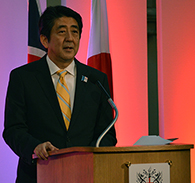| << Chapter < Page | Chapter >> Page > |

As other chapters discuss, macroeconomics needs to have both a short-run and a long-run focus. The challenge for many of the developed countries in the next few years will be to exit from the short-term policies that were used to correct the 2008–2009 recession. Since the return to growth has been sluggish, it has been politically challenging for these governments to refocus their efforts on new technology, education, and physical capital investment.
The world’s great economic success stories in the last few decades began in the 1970s with that group of nations sometimes known as the East Asian Tigers : South Korea, Thailand, Malaysia, Indonesia, and Singapore. The list sometimes includes Hong Kong and Taiwan, although these are often treated under international law as part of China, rather than as separate countries. The economic growth of the Tigers has been phenomenal, typically averaging 5.5% real per capita growth for several decades. In the 1980s, other countries began to show signs of convergence. China began growing rapidly, often at annual rates of 8% to 10% per year. India began growing rapidly, first at rates of about 5% per year in the 1990s, but then higher still in the first decade of the 2000s.
The underlying causes of these rapid growth rates are known:
This combination of technology , human capital , and physical capital , combined with the incentives of a market-oriented economic context, proved an extremely powerful stimulant to growth. Challenges faced by these middle-income countries are a legacy of government economic controls that for political reasons can be dismantled only slowly over time. In many of them, the banking and financial sector is heavily regulated. Governments have also sometimes selected certain industries to receive low-interest loans or government subsidies. These economies have found that an increased dose of market-oriented incentives for firms and workers has been a critical ingredient in the recipe for faster growth. To learn more about measuring economic growth, read the following Clear It Up feature.

Notification Switch
Would you like to follow the 'Macroeconomics' conversation and receive update notifications?